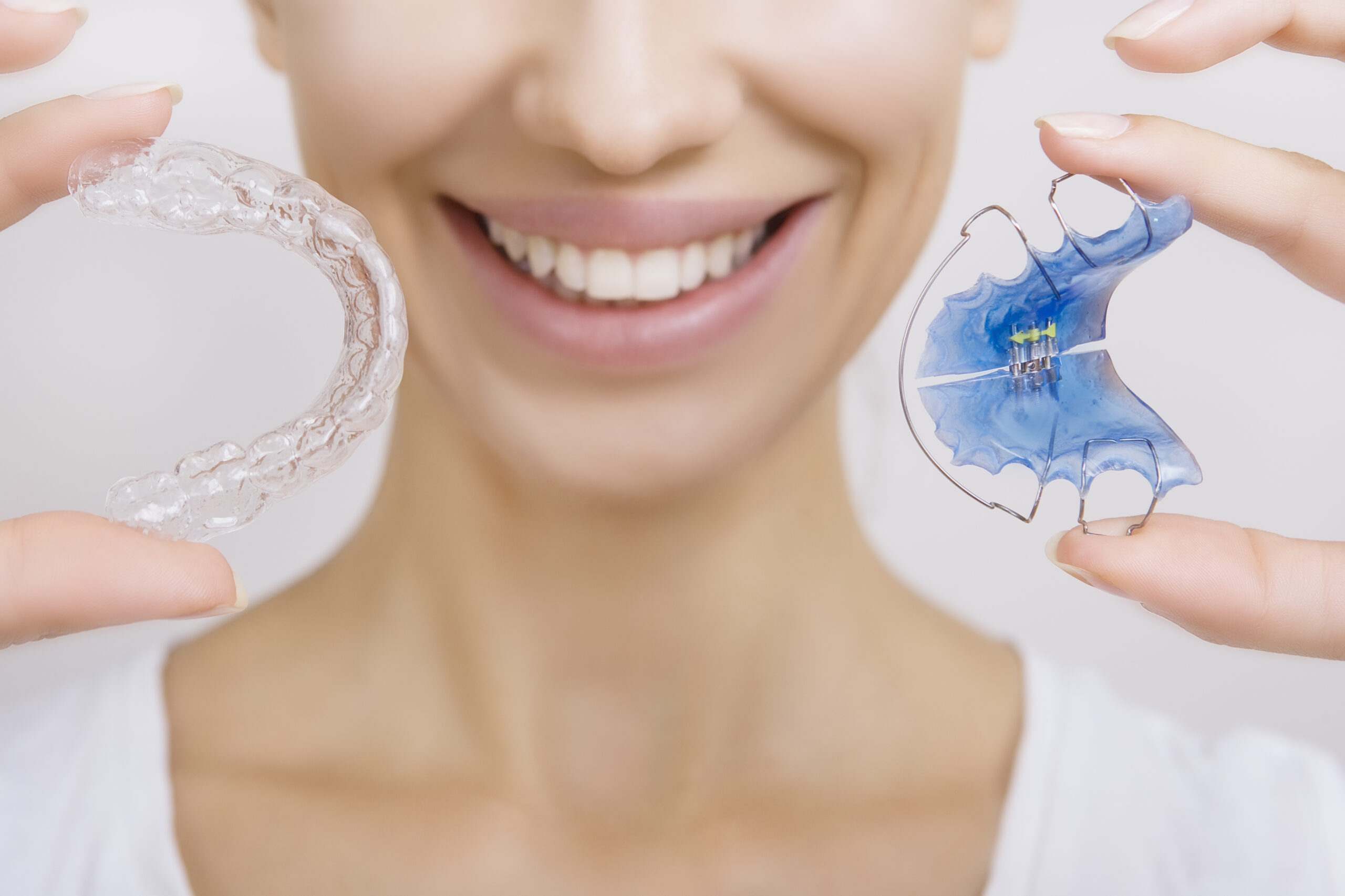The answer lies in the reason why they are called retainers.
Without them, your teeth could relapse back towards their old position before your treatment started.
In the immediate weeks and months after you finish treatment this relapse is due to a kind of ‘muscle’ memory in the ligaments that hold your teeth in place. Nobody wants to see this after the investment of time and money put into orthodontic treatment.
The bottom line is that if you have orthodontic treatment, be it with braces or aligners, you definitely need to wear retainers on at least a nightly basis.
ARE RETAINERS EASY TO WEAR?
Getting into the habit of wearing retainers on a daily basis and keeping them safe can be a challenge.
Perhaps you could think of it this way. Putting your retainers in at night after brushing your teeth is similar to putting your shoes on going out for a walk.
In reality, putting your retainers in each night is simple, quick and the best guarantee for keeping your teeth straight.
TYPES OF RETAINERS
There are two types of retainers, removable retainers and fixed (permanent) retainers. Your orthodontist will help you choose which is best for you based on what you needed braces for before you started treatment. You may be given only one type of retainer or you may receive, say a removable retainer for the top teeth and a fixed retainer for your lower teeth.
Removable retainers are simple to make, simple to wear and easily removed for eating and cleaning. For the most part they are worn at night while you sleep.
Their main disadvantage is that they can be misplaced or damaged when not in your mouth. And when you stop wearing your removable retainer relapse is very likely.
There are two main types of removable retainers, the clear Essix retainer and the retainer with a wire across the front teeth called the Hawley retainer.
The clear Essix retainer is the most commonly use retainer. When they fit well they are almost invisible and there is little or no space for teeth to move. The best way to ensure a continuous good fit like this is to wear them each night and make sure you seat them well each time you put them in.
The old fashioned Hawley retainer is now less frequently used. However it is the one retainer that can sometimes be used to correct minor relapse such as a space opening or a rotation returning. They are less aesthetic than Essix retainers but given that they are mainly worn while you sleep, who is going to notice?
A fixed retainer is a wire which is shaped and fixed or bonded to the inside of your lower and / or upper front teeth. Your orthodontist may especially recommend a fixed retainer if they are concerned that there is higher risk of relapse once your treatment is finished or if they are worried that a patient will not follow instructions for wearing a removable retainer. Maintaining good cleaning between your teeth can be more difficult so it is important to visit your dentist or hygienist regularly to make sure your gum health is not compromised. They are simple to wear and not visible to others but they can come away from one or more teeth particularly when you eat and they can make cleaning more challenging.
FOR HOW LONG SHOULD YOU WEAR YOUR RETAINERS?
Now that your teeth are nicely aligned, the effects of chewing, growth, everyday wear and that dental ligament memory we mentioned earlier can lead to relapse.
This is why orthodontists recommend that you wear your retainers indefinitely or for as long as you would like your teeth to remain straight.
Your orthodontist will periodically want to check your retainers to make sure they are doing their job and your teeth are not moving.
You should see your orthodontist as soon as possible if you lose or damage either your removable or fixed retainer or if you notice any unwelcome tooth movement.
HOW DO I TAKE CARE OF MY RETAINERS?
Firstly keep them in a protective container case safe in your pocket or your room when you take them out to eat.
Never wrap them in a tissue or napkin or leave them unattended particularly if you have a dog.
Clean your retainers each night when cleaning your teeth. Brush them gently on the inside surface with some toothpaste and cold water.
Hot or boiling water will cause them to warp and they will then need to be replaced.
If you ever feel any deterioration in the way they fit, return to your orthodontist with them and see if they need to be remade.
With a fixed retainer, see your dentist or hygienist regularly to make sure you are cleaning the spaces between your teeth correctly.
As with your braces, fixed retainers can break if you chew something hard or use a toothpick so be careful of what you eat and how you clean around them.
In summary, while fixed retainers can be an attractive option, bear in mind that they can come away from your teeth if you chew hard food against them and cleaning interdentally (between your teeth) is more challenging. Many patients eventually move on to removable retainers for those reasons.
While removable retainers are easy to misplace, if you can get into the routine of wearing them on a nightly basis they are a simple and healthy way to guard against orthodontic relapse.
Dr Michael Ryan set up his orthodontic practice in Dundrum in 1997 which provides specialist treatment using fixed braces and Invisalign. In 2008 Michael was president of the Orthodontic Society of Ireland. He has also served on the Council of the Irish Dental Association. He is a member of the Irish Academy of America Graduate Dental Specialists and a fellow of the World Federation of Orthodontists.

